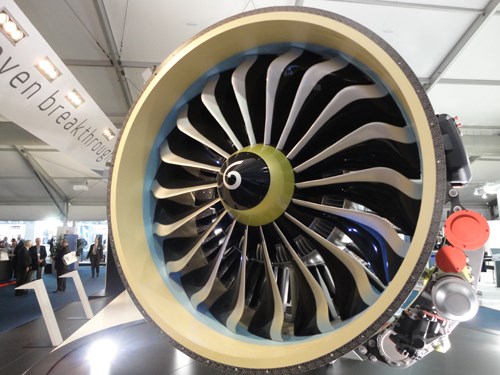LEAP backlog spurs composites production expansion
If some were unaware of the significance CFM International’s composites-intensive LEAP engine, there was no ignoring two announcements in February that signaled just how massive this commercial jet engine program is and will be.
Share
Read Next

CFM International's composites-intensive LEAP engine is being specified in big numbers for the A320neo and 737 MAX, spurring substantial composites capacity expansion.
If some people in the world of composites were unaware of the significance CFM International’s (West Chester, OH, US) composites-intensive LEAP engine, being specified for the Airbus A320neo and the Boeing 737 MAX, there was no ignoring two announcements in February that signaled just how massive this commercial jet engine program is and will be.
First, on Feb. 8, CFM reported it booked orders for 1,418 LEAP engines in 2015 (including spares). Further, the LEAP engine has now surpassed 10,000 total engine orders and commitments (excluding options) at a value of $140 billion U.S. at list price. 2016 marks the start of the transition to LEAP engine production, with more than 140 units in the plan. The company expects to complete the transition by 2020, with an annual production rate of more than 2,000 engines.
Then, on Feb. 12, Safran announced that it will build a third composites fabrication plant in conjunction with Albany Engineered Composites (Manchester, NH, US), this time in Mexico, to meet demand for composite parts on the LEAP engine. The new plant — which will make carbon fiber composite fan blades and fan case — will be built along the same lines as two existing Safran/Albany plants, in Rochester, NH, (inaugurated March 2014) and Commercy, France (inaugurated November 2014). Parts produced at the new plant are intended for the American market (on the Boeing 737 MAX, powered by LEAP engines exclusively), while the Commercy plant will primarily make parts for engines powering Airbus jetliners, mainly in Europe. Production will start by the end of 2017. Production volumes will rise sharply the following year, reaching an annual rate of more than 20,000 blades in 2021.
For details how the fan blades and cases are made, visit short.compositesworld.com/Albany3D.
Related Content
-
Cryo-compressed hydrogen, the best solution for storage and refueling stations?
Cryomotive’s CRYOGAS solution claims the highest storage density, lowest refueling cost and widest operating range without H2 losses while using one-fifth the carbon fiber required in compressed gas tanks.
-
Manufacturing the MFFD thermoplastic composite fuselage
Demonstrator’s upper, lower shells and assembly prove materials and new processes for lighter, cheaper and more sustainable high-rate future aircraft.
-
Plant tour: Spirit AeroSystems, Belfast, Northern Ireland, U.K.
Purpose-built facility employs resin transfer infusion (RTI) and assembly technology to manufacture today’s composite A220 wings, and prepares for future new programs and production ramp-ups.
















